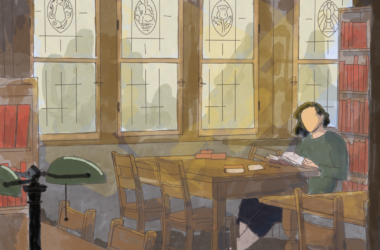Since 2003, a reported 400,000 murders have taken place in Darfur, Sudan, at the hands of the state-sponsored militia, the Janjaweed, and their campaign of ethnic cleansing. While the main violence has ended – there are few villages left to burn – the atrocity has displaced over 2.5 million Darfuris, who are now in refugee camps in western Sudan and neighbouring Chad. While the United States government has rightfully described the conflict as genocide, the UN has yet to recognize it as such.
Organizations like STAND (Student’s Taking Action Now: Darfur) – a student-led anti-genocide coalition founded in 2005 – have come together in the name of advocacy and activism on behalf of Darfur. Most recently, STAND has initiated a campaign called Stand for the Dead, which asks individuals to stand for the life of Darfuri victims of genocide by wearing a T-shirt with one deceased person’s name across their chest. To kick off the campaign, STAND has launched a 10-city film tour premiering Darfur.
Directed and produced by Uwe Boll and Chris Roland, Darfur is a fictionalized account of six Western journalists who visit a small Darfuri village in order to obtain evidence of genocide in the region. Along with a Nigerian representative from the African Union, the journalists discover mass graves and encounter a village in which children hide in fear of being recruited to the Janjaweed and women are often raped. When the journalists learn that the Janjaweed are heading towards the village, they are suddenly faced with the impossible decision to either leave Sudan and report their findings to the world, or risk their own lives in hopes of averting the massacre.
An attempt to better describe a film that is so rooted in its almost unbearably graphic imagery would be futile. Most of the film’s action revolves around the utterly gruesome massacre of the villagers who the audience recently came to know; women are raped, men are shot, and children are herded into burning huts. In order to convey a sense of documentary realism, the film is shot like a home video – the camera often landing awkwardly on various parts of the actors – which contributes to the feeling of nausea one experiences upon watching Darfur.
The film is undoubtedly problematic in many respects. Firstly, the conflict was portrayed as one that can be neatly divided between Arab-Darfuris and black Darfuris. This clear binary was further underscored by the choice of background music, which shifted between classical African tribal music and Arabic melodies. The reality is somewhat more complex, with members of different tribes engaging in both sides of the conflict. It is also difficult to ignore the aspects of Hollywood sensationalism – the dramatic addition of white heroism was unnecessary, and the rendering of atrocity in artistic means presented its own set of problems. Furthermore, the issue of appropriation of voice is insurmountable.
However, if the film’s ultimate aim is to promote awareness about the barbarity that has ensued, then it effectively does so. Boll prefaces the film with the disclaimer that it is meant as an artistic representation. Moreover, many of the Darfuris in the movie are actual survivors of the genocide. “The Sudanese people play themselves,” says Boll. “For example, women who were raped and now have AIDS as a result are playing that as actors.” In this sense then, the Darfuri victims are being given the unique opportunity to share their experience and to spread their message.
Moreover, Boll wanted to focus more on the ways in which people living free from such horrifying realities in the west, will react and respond. While at the beginning of the film, the journalists are full of middle class ennui, by the end they question their ability to go back to their normal lives in light of having witnessed such unfathomable cruelty.
The members of STAND chapters at McGill and at other universities across Canada are similarly committed to raising awareness and promoting political activism. “When you watch the film you want to kill those people just like the reporters did in the film,” said Menachem Freedman, a representative from STAND Concordia. “But the desire for more violence isn’t the correct response. Right now, it’s not about violence but justice.”
The scale of the violence has decreased, but now there is the issue of the millions of Darfuris who have been displaced from their homes and are living in inhumane conditions, a Sudanese president who refuses to admit to his abominable crimes, and an international community that has yet to give the issue the attention and the credence it deserves.
The closing line of the film – “that we haven’t stopped genocide means that we haven’t learned from the past” – is the message that STAND and other activist groups are ultimately trying to convey. Going into Darfur to help fight the Janjaweed is not within the realm of viable action. However, recognizing that genocide is a human reality that very much continues to take place and participating in political advocacy in order to ensure that the rest of the world recognizes it too is a start.
To find out more about the Stand For the Dead campaign, visit www.standforthedead.com.







